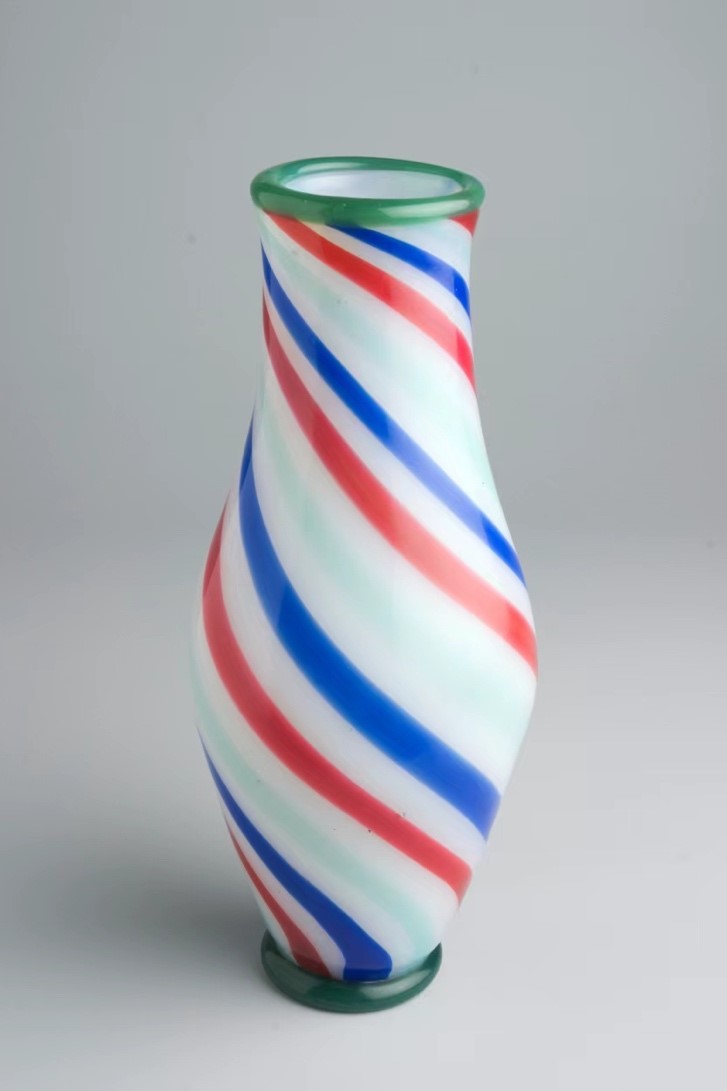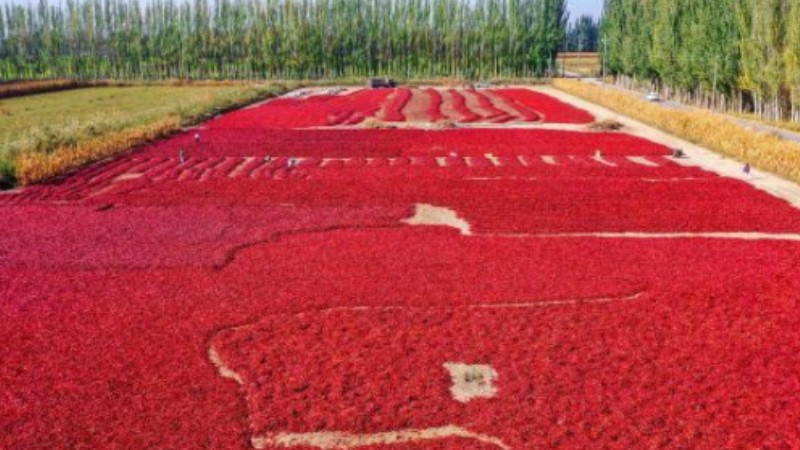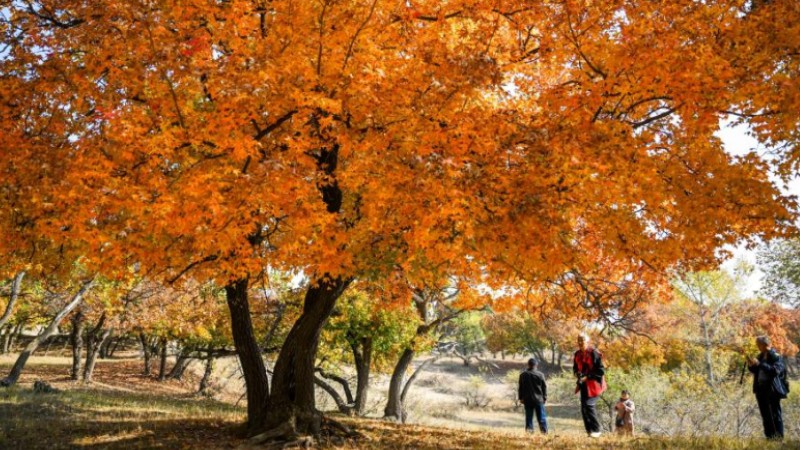Kate Newnham: Appreciating the beauty of Chinese culture in museums
The Bristol Museum & Art Gallery in southwest England aims to encourage the visitors who go through its doors to gain a thirst for knowledge and a deep appreciation of beauty. This regional museum is renowned for its Chinese collection, particularly its exquisite Chinese porcelain and glass.

Kate Newnham (Photo/Patrick Shead-Simmonds)
Behind the wonderful Chinese collection is the museum’s Senior Curator, Kate Newnham, who is also an expert in Chinese art history. Since 2000, Newnham has overseen the Asian Art & Culture and Visual Arts collections here, and has been actively involved in organizing an array of exhibitions and events that immerse visitors in China’s rich cultural tapestry. Every year, Newnham plays host to a Chinese Lunar New Year celebration at the museum, inviting local visitors to take part in various activities to explore and enjoy the many facets of Chinese culture.
In an interview with People’s Daily Online, Newnham highlighted Bristol Museum’s role as a window of cultural exchange, embracing diverse cultural traditions from around the world. Beyond engaging with the depth of Chinese culture, the museum takes visitors on an exploration of various global cultures to enrich their understanding and appreciation.
An encounter with works of contemporary Chinese artists

Kate Newnham at Bristol Museum & Art Gallery (Photo/Patrick Shead-Simmonds)
Newnham described how the 200-year-old Bristol Museum’s first encounters with Chinese culture can be traced back to the 1840s. A hundred years later in 1946, Max Schiller (1868-1946), who was the chief judge in Bristol, bequeathed over 400 Chinese artefacts, most of which were collected by his brother, Ferdinand Schiller (1866-1938), making the Chinese collection at Bristol very significant. Ferdinand Schiller had been an early member of the Oriental Ceramic Society in London. The collection is known for exquisite ceramics from the Song (960-1279) and Tang (618-907) dynasties. “Creamy, light green and plain glazes give Song dynasty ceramics a distinctive Chinese elegance. This was a new kind of aesthetic for the collectors at the time, different from the normal taste of Westerners, who liked rich colors, patterns, and designs,” Newnham explained.
Visitors to Bristol Museum can also view beautiful traditional Chinese glass from the Han dynasty (202 BC – 220) to the Qing dynasty (1644-1911); each showcases exceptional craft skills and vivid artistic styles. Bristol has been a renowned center of glassmaking since the 18th century, so it made sense that the bequest of Henry Burrows Abbey (1872-1949), which comprises 300 pieces of Chinese glass, came to the museum through The Art Fund in 1950.
“One of my favorite pieces is a bit of a mystery. It is a piece of Chinese glass with a very Chinese shape, but it has Venetian or Italian style stripes on it. When you look at it you cannot help but think, can that be Chinese?” Newnham said as she showed a rare vase with a unique type of design. “It was made in the Imperial workshops at a time when French missionaries and Chinese craftspeople were working together, and it has a mark on the base of the Qianlong Emperor (reigned 1735-1796). There are only two vases like this existing in the world; the other one is in the Palace Museum in Beijing.” For Newnham, this piece shows how both European and Chinese craftspeople learned from each other and collaborated to perfect their art.

Glass vase with spiral threads of colored glass (vetro a fili), Qianlong mark and period (1736-1795). © Bristol Museum & Art Gallery, N4746
In recent years, Bristol Museum has been actively collaborating with contemporary Chinese artists. In 2014 and 2015, the museum curated a temporary exhibition called “Ahead of the Curve: New China from China”, which showcased the work of contemporary Chinese potters and glass makers. “We partnered with Claire Blakey from the Potteries Museum and Art Gallery in Stoke-on-Trent and Helen Brown from the Wilson Art Gallery in Cheltenham for this project and travelled to China on several occasions. We were able to visit Tsinghua University, Shanghai University and Jingdezhen Ceramic Institute and meet with professors and students there to have discussions and learn about their work. We collaborated closely with Professor Shannon Guo and staff at Twocities Gallery in Shanghai and their help was invaluable. We eventually brought over the work of 15 ceramic artists and five glass artists to tour three UK museums,” Newnham said. Recalling this ground-breaking exhibition, Newnham said that these daring contemporary Chinese artworks received high praise from visitors. Han Xi’s “Lost”, Shao Changzong’s “Faceless” and Wan Liya’s “Birds Twitter and Fragrance of Flowers” as well as other inspiring works by contemporary Chinese ceramic and glass artists were acquired by the Bristol Museum after the exhibition.
Newnham also mentioned a joint project with the British Museum called “China: Journey to the East”. The exhibition was specifically aimed at children from the ages of 7 to 14, exploring a variety of themes, ranging from technology and beliefs to food and language, spanning 3,000 years of Chinese history and culture. Currently, Newnham is planning an exhibition of Miao textiles and embroideries from southwest China, allowing visitors to appreciate the beauty of the work by Chinese ethnic minorities. In particular, the exhibition will showcase beautiful embroideries collected by two Bristol ladies over the last 20 years.
Sharing Chinese culture with the local community

Kate Newnham at the 2023 Chinese Lunar New Year Celebration
A culturally diverse city, Bristol has a population of about 1 million, with people coming from 180 countries and speaking over 90 different languages. Bristol Museum recognizes the importance of embracing different unique cultures to foster better communication and understanding between people, and celebrates a range of cultural events, such as the Mexican Day of the Dead, Diwali and peach and cherry blossoms in Japan.
For the staff at Bristol Museum, the Chinese Lunar New Year celebration provides an important opportunity to spread cultural understanding. The museum hosts the biggest Chinese Lunar New Year celebration in the southwest of England, an annual highlight in its calendar over the last 20 years. Newnham and colleagues are at the heart of the celebration, working closely with local people and Chinese students at the city’s universities, and planning and delivering a vibrant array of activities related to Chinese culture. Newnham also hosts the celebratory event. The celebration offers visitors the chance to experience various fun and engaging activities ranging from lion dance, martial arts, traditional Chinese dance, and music to hand-made lanterns, artefacts, and calligraphy. The museum also creates an animal trail every year based on the 12 Chinese zodiac signs for visitors to follow and look around the museum.
“Our Chinese Lunar New Year event is the biggest event in the museum calendar. This year, we asked the University of Bristol Chinese lion dance troupe to perform four times over the weekend, so everyone could have an opportunity to enjoy their fantastic performance. The local martial arts groups also performed their Shaolin routines during the celebration; the crowd absolutely loved the praying mantis and monkey Kung Fu routines,” she said. For Newnham, whether it’s through music or dance or trying out calligraphy and learning Chinese poetry, all these activities are ways to offer locals the chance to get a small taste of Chinese culture.
Newnham explained that alongside the permanent gallery and temporary exhibitions, Bristol Museum also hosts regular lectures and gallery talks. “The other day, when we were doing a talk about jade and ceramics, there was a little boy around 10 years old who was really fascinated with Chinese history, and he asked us if people in China were in contact with the Romans 2,000 years ago. He was also very interested in Chinese coins and wanted to know if we had any in the collection. So, in order to answer the request from our little visitor, we are doing a lot more work on the Chinese coins in our collection, which span about two and a half thousand years in date, and we hope to have a new display soon,” she noted.
Newnham emphasizes that museums offer spaces that bring people from different cultural backgrounds together to understand, learn and experience diverse cultural traditions, as well as being places where visitors can enjoy learning about art, science, and natural history. “Yesterday, we had a group of students from a local college, who are learning English, and they come from nine different countries. Probably none of them have been to China, but it is a way that they can get the first taste of Chinese culture.”
Photos
Related Stories
- In pics: preview of exhibition held at Museum of Fine Arts in Texas
- Culture, museum craze drives consumption during China's eight-day holiday
- Chinese museums receive 66 mln visits during eight-day holiday
- Vitality of traditional Chinese culture shines in museum
- Beijing has one museum for every 100,000 people
- Beijing has one museum for every 100,000 people
- Chinese Archaeological Museum opens to general public
Copyright © 2023 People's Daily Online. All Rights Reserved.









